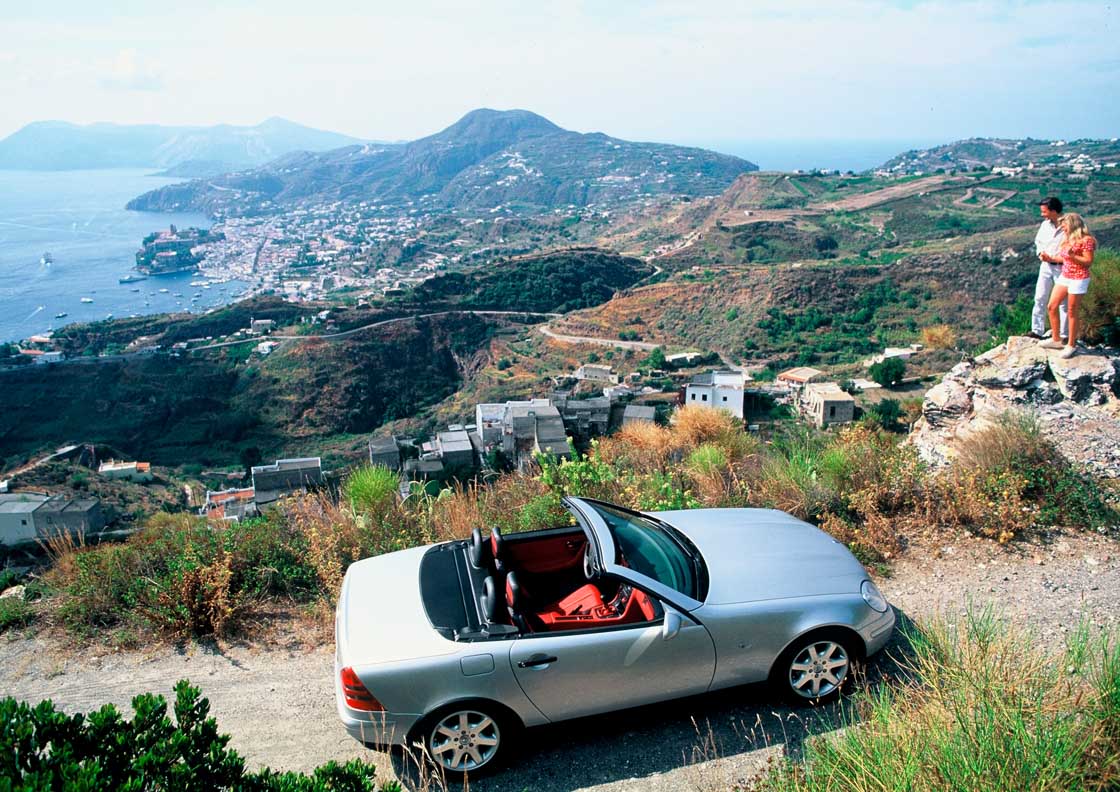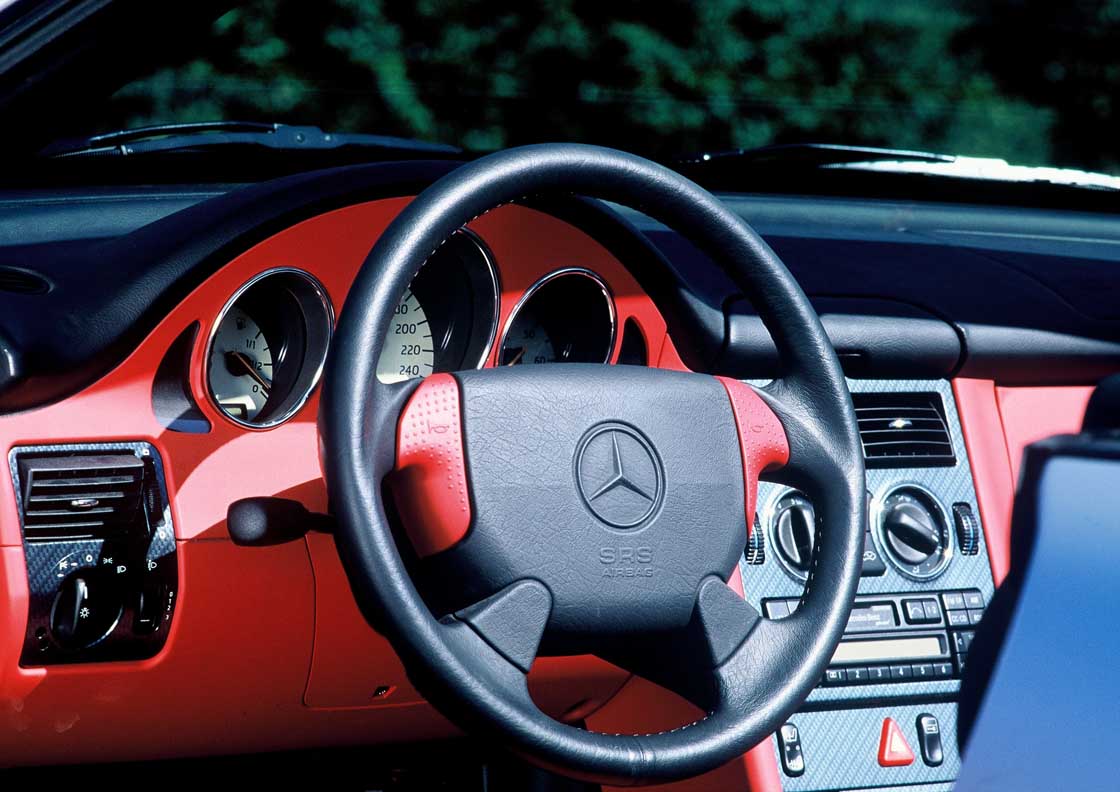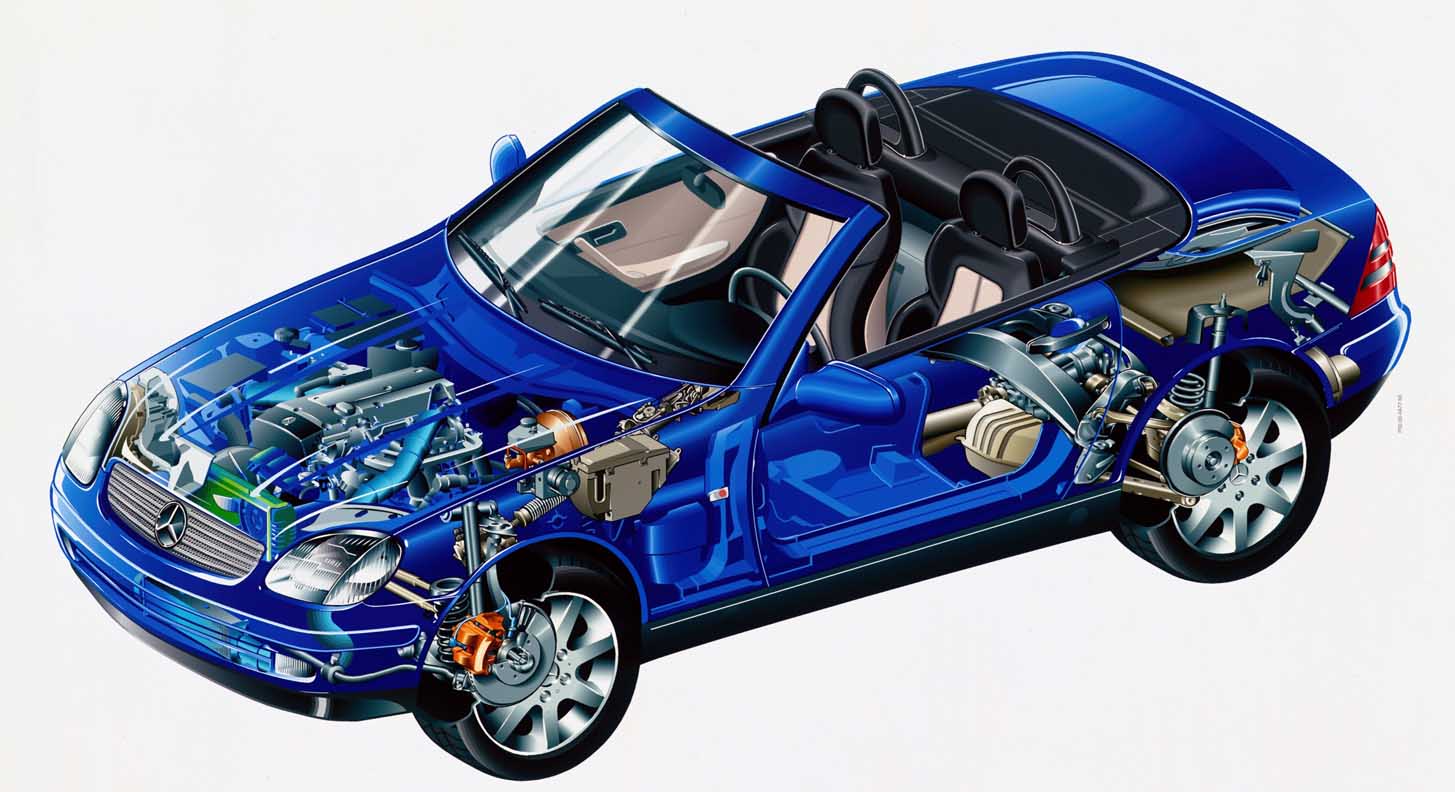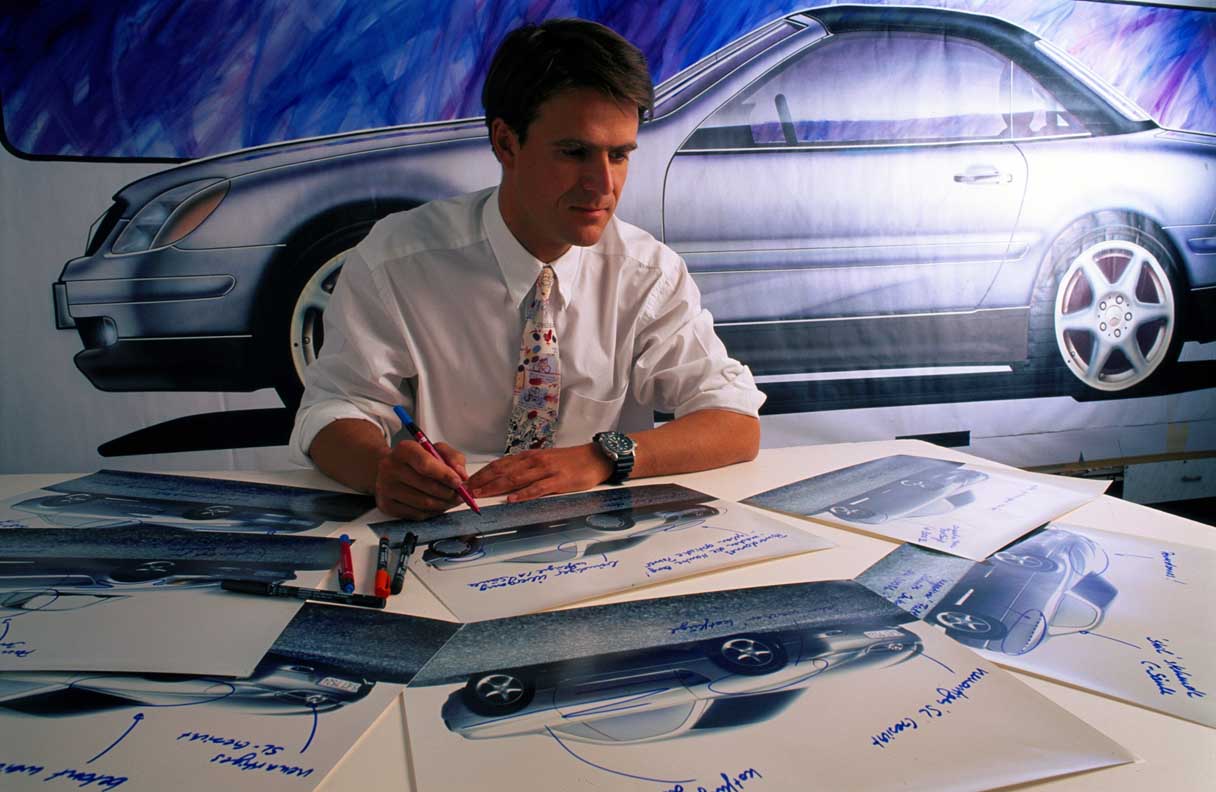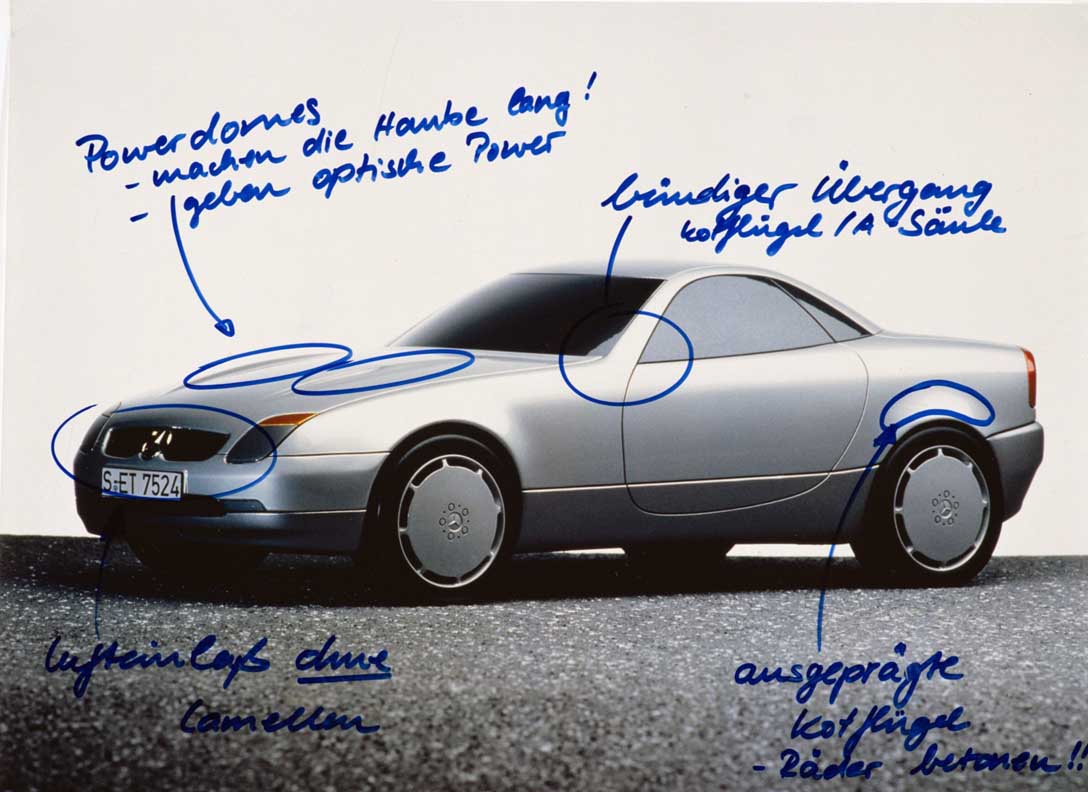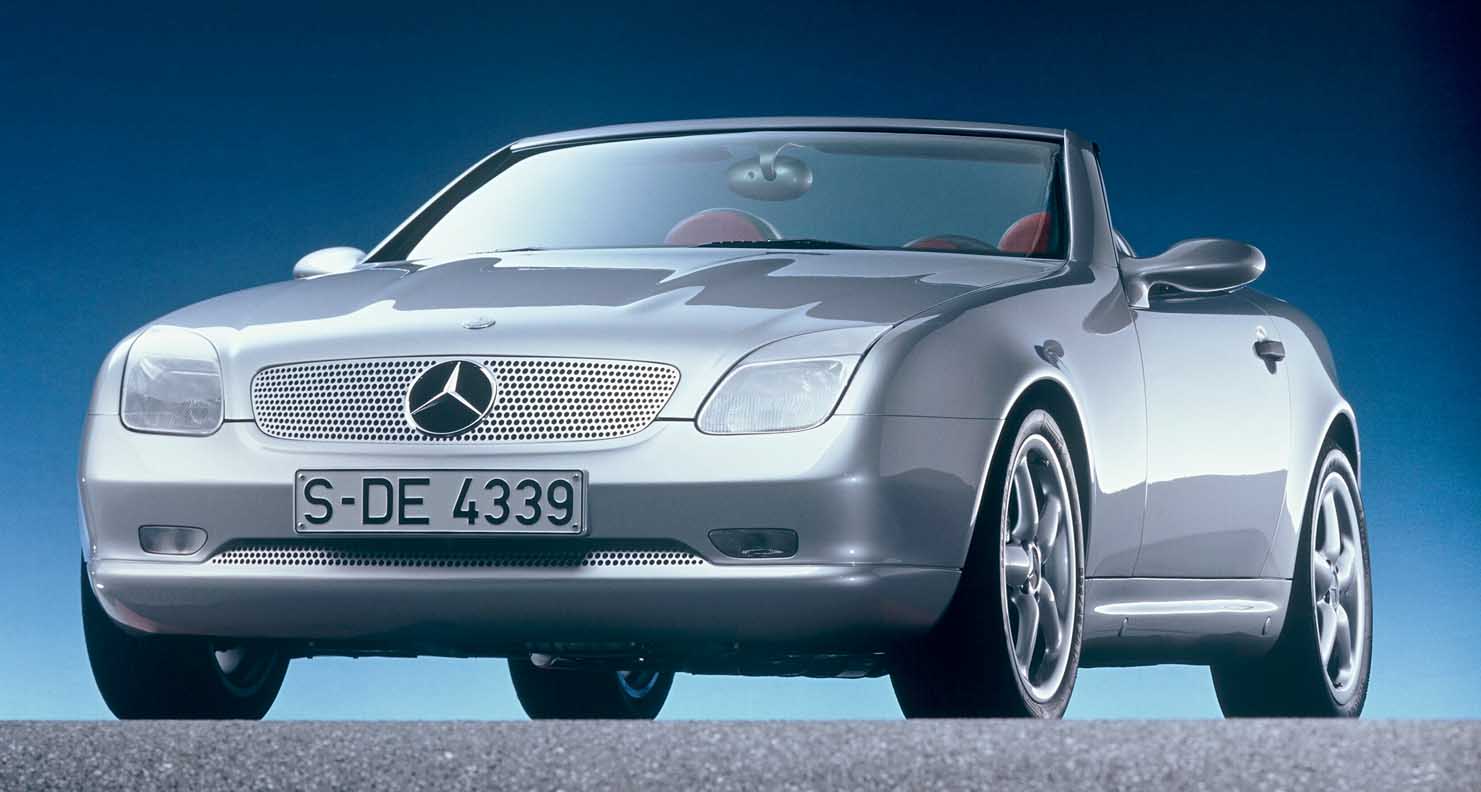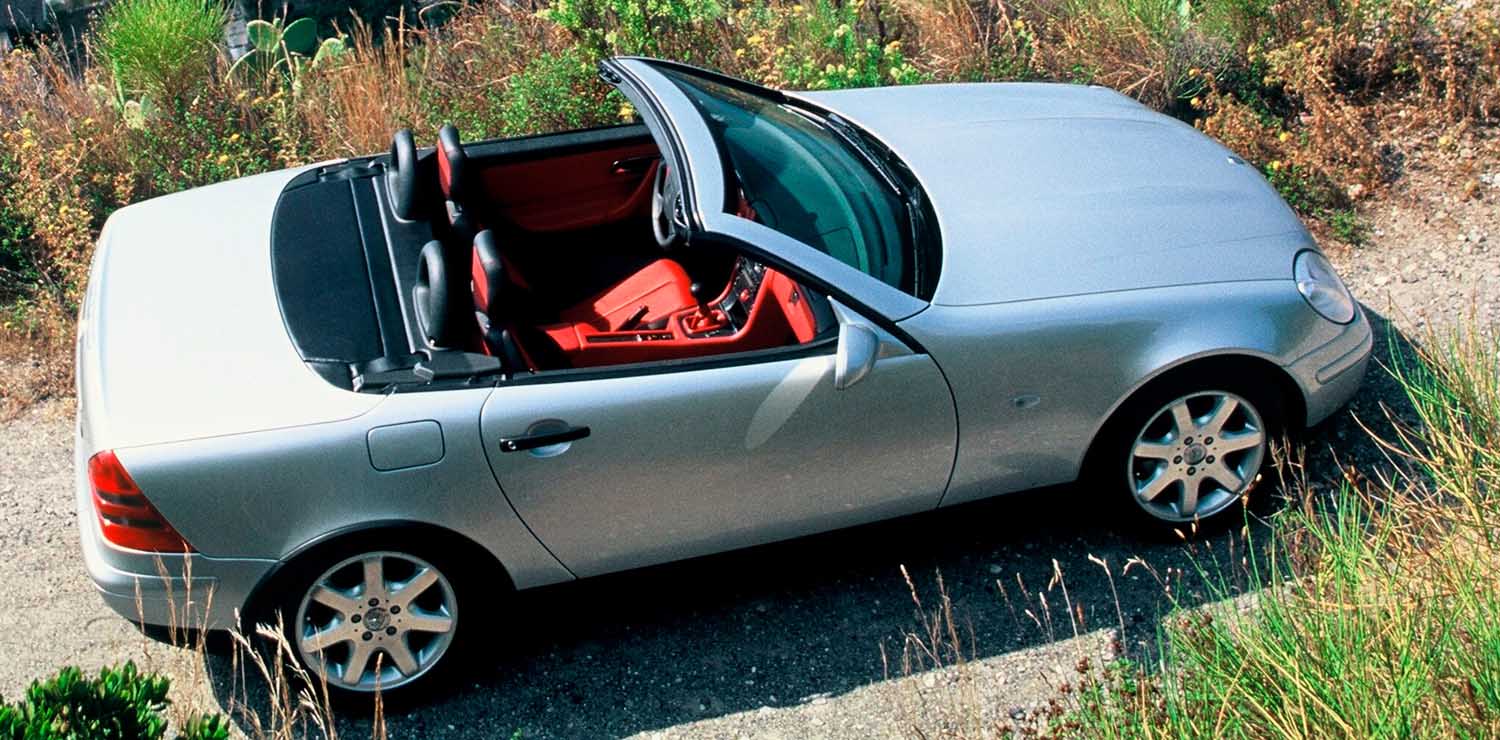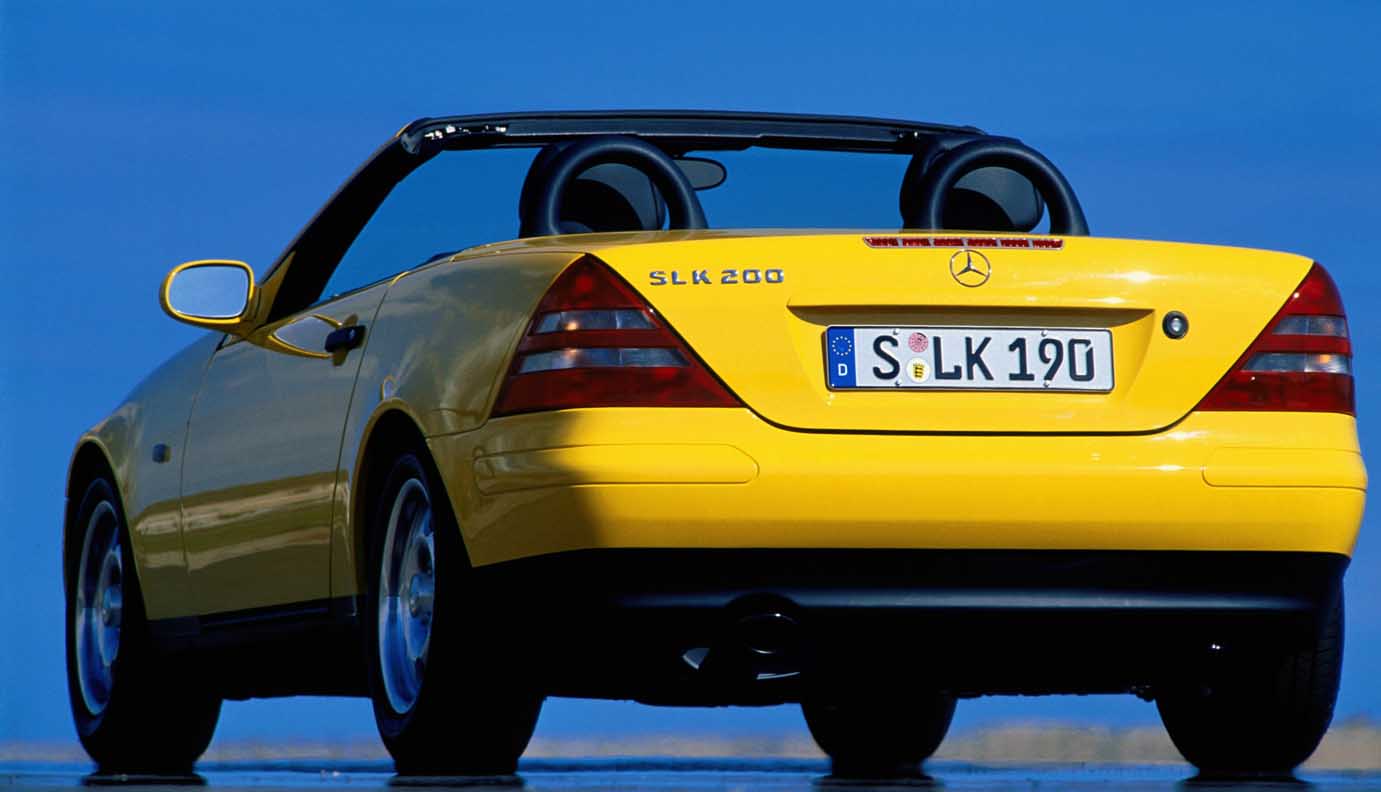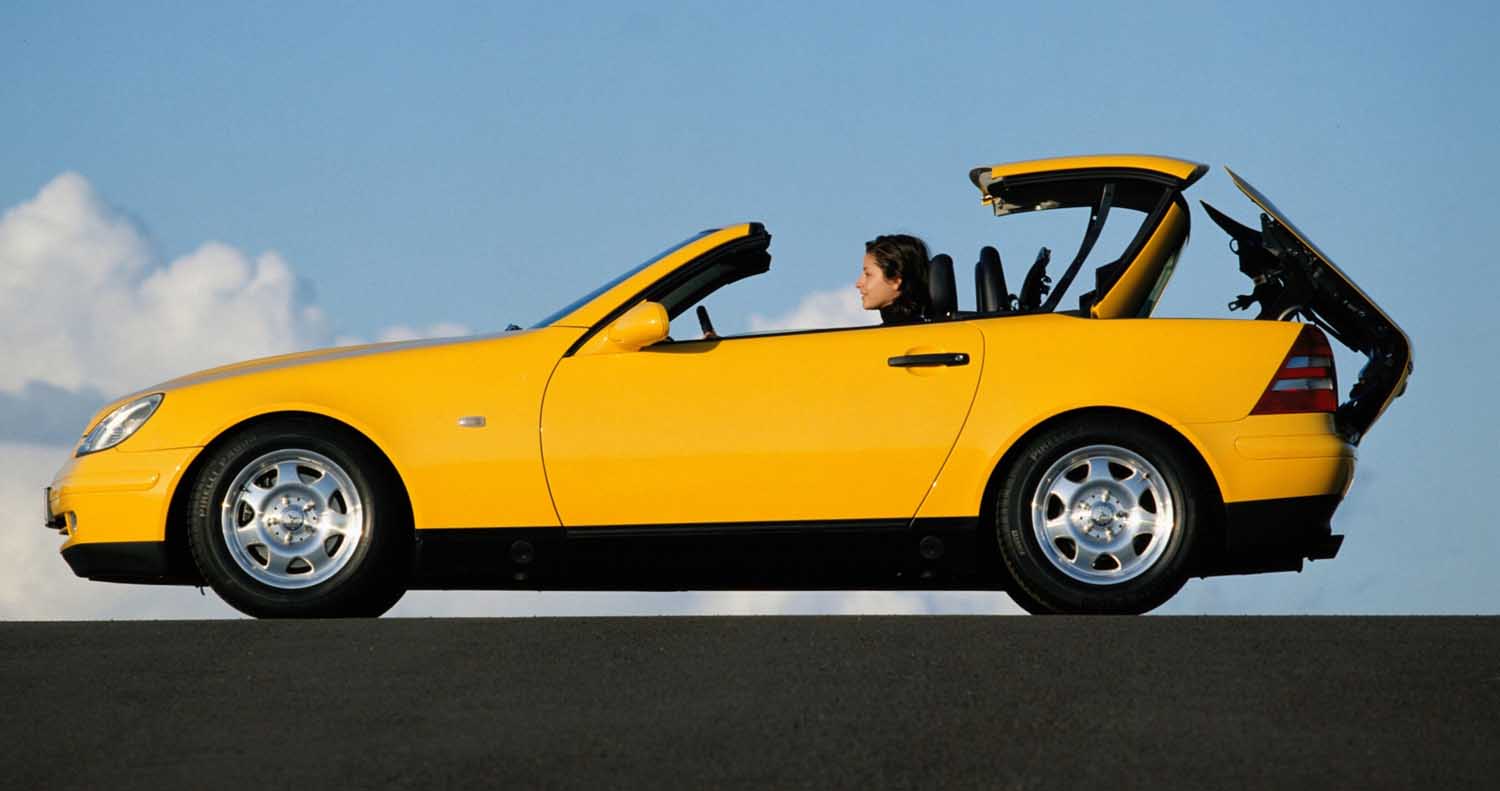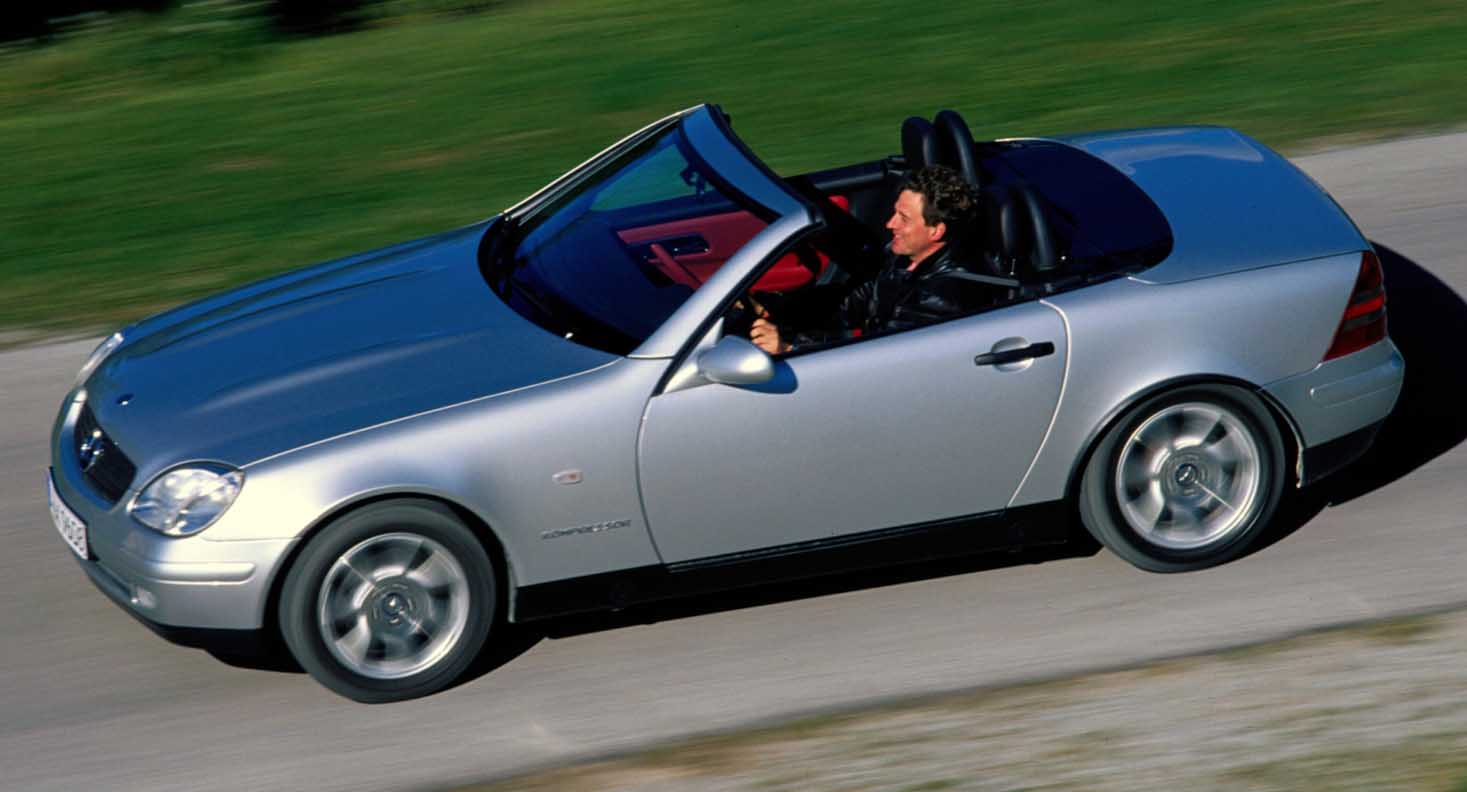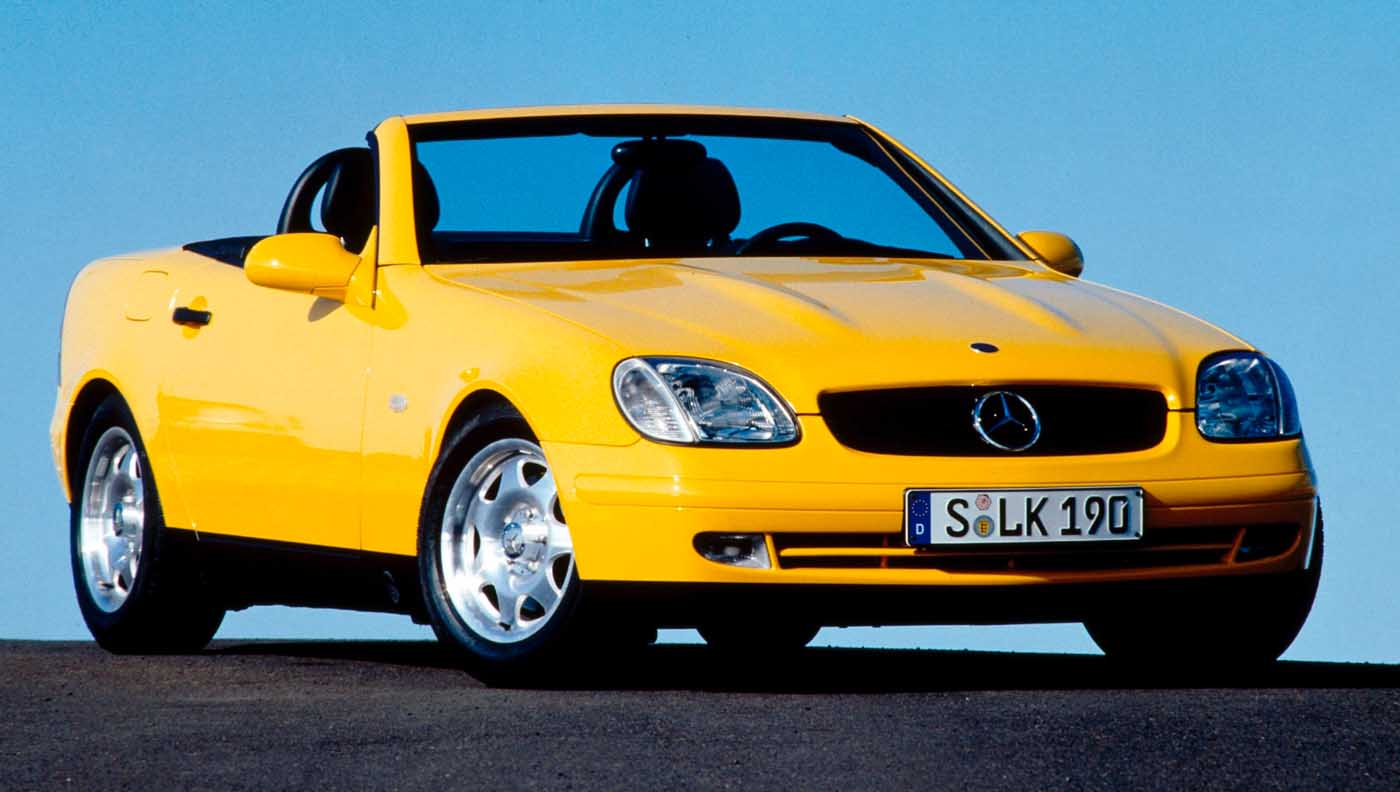
Twenty-five years ago, Mercedes-Benz surprised not only roadster fans with its revolutionary concept: thanks to its folding vario-roof, the new SLK (R 170 model series) could transform itself from an open-top car into a coupé with a fixed, noise-insulating steel roof in less than half a minute. And it also scored heavily with a range of additional innovations, in the field of safety, for example.
The SLK performed impressively in all the relevant crash tests through to the rollover test. The lightweight construction concept using magnesium, among other materials, reduced the weight of the basic version of the SLK 200 to just 1,270 kilograms. By 2004, no less than 311,222 SLKs of the R 170 model series had been built at the Bremen plant.
In a total of three generations covering the R 170, R 171 and R 172 model series, this compact open-top Mercedes-Benz roadster sold more than 710,000 units – from 2016 as the SLC.
The first generation is already a popular recent classic and, as a result, is already into the second stage of its existence. Trade magazine “Motor Klassik” commented in April 2019: “The first SLK model series (R 170) was a bestseller and had the makings of a classic.”
The roadster was given its name during the design phase, when engineers referred to it as the “SL kurz” (“compact”) in a tribute to the Mercedes-Benz SL. Indeed, the R 170 model series, with a body length of 3,995 millimetres, was around 500 millimetres shorter than the SL Roadsters of the then current R 129 model series.
World premiere in Turin
The production version of the SLK was presented at the International Motor Show in Turin on 22 April 1996. This sports car was perfectly matched to its time: open two-seaters were then experiencing a strong renaissance. In Western Europe, the annual number of car registrations in this market segment rose from 11,300 in 1992 to 98,500 in 1995.
The SLK contributed to the boom in open-top cars of the 1990s and 2000s. For some of that time, this Mercedes-Benz was the bestselling car with a metal folding roof in Germany.
The SLK was of great importance to the brand because it appealed to a younger and lifestyle-orientated group of buyers. In retrospect, Jürgen Hubbert, a member of the Mercedes-Benz Board of Management at the time, said: “The SLK, CLK and the M-Class models have contributed a lot to a new image of Mercedes-Benz.”
A study that was also presented in Turin in April 1994 whetted the public’s appetite for the roadster. It was based on work by the designer Michael Mauer and came very close to the later production model. Mauer’s model with short overhangs at the front and rear in conjunction with a comparatively long wheelbase highlighted many design details, from the bonnet with its power domes to a striking airflow break-away edge at the rear.
A second concept car presented in Paris in autumn 1994 not only showed the vario-roof, but also a unique interior design. From 1996 onwards, the SLK standard-production sports car attracted considerable attention due to its surprisingly colourful and varied interior combined with refreshing exterior colours.
Bending the rules: The folding vario-roof
The folding steel roof of the SLK as an alternative to the classic fabric top was an outstanding and much admired technical achievement of the roadster. The idea was not completely new to the automotive industry, but the few designs before it involved the entire roof being lowered into the boot, which took up a lot of space. Mercedes-Benz engineers revolutionised the concept with a process known internally as the “trick with the kink”: the roof made of steel and glass panels folded back under the boot lid, which opened in the direction of travel.
This meant that the rear end of the body could be kept short, and even when the roof was open, there was still room for luggage in the boot.
An electrohydraulic system choreographed the opening and closing process with the help of five hydraulic cylinders. Before the start of series production, 30 prototypes had to undergo the opening and closing process 20,000 times each. Projected over ten years, this corresponded to opening and closing the roof six times a day.
Operation was simple: pressing a switch on the centre console transformed the SLK from a coupé into a roadster – or vice versa – within 25 seconds.
The SLK’s safety philosophy, which set standards in its class at the time, was worthy of special note. One striking feature was the two sturdy roll bars to protect occupants in the event of a rollover. Tube-reinforced A-pillars made a further contribution to occupant protection.
In addition, the SLK was equipped with airbags, belt tensioners and belt force limiters as standard. The newly developed ellipsoid bulkhead which was part of the front structure increased the front deformation area in the event of a head-on collision – this reduced the risk of the footwell becoming constricted. In crash tests, the SLK met Mercedes-Benz’s own standards, thereby exceeding the stipulated mandatory requirements.
Four- and six-cylinder engines in the R 170 model series
Initially, the roadster was offered as an SLK 200 (100 kW/136 hp) and as an SLK 230 supercharged version (142 kW/193 hp). Following a facelift in 2000, the six-cylinder SLK 320 (160 kW/218 hp) and SLK 32 AMG (260 kW/354 hp) completed the range. The first SLK triggered a small but prestigious line of tradition: in January 2004, Mercedes-Benz presented the SLK of the R 171 model series.
A highlight of that model was the optional AIRSCARF. This world first conveyed warm air between the seat backrest and head restraint to the neck area of the occupants and, in conjunction with the standard draught stop, enabled open-top driving even at low outside temperatures. The third SLK generation (R 172) was unveiled in 2010. In 2016, it was renamed the SLC and produced until 2020.
